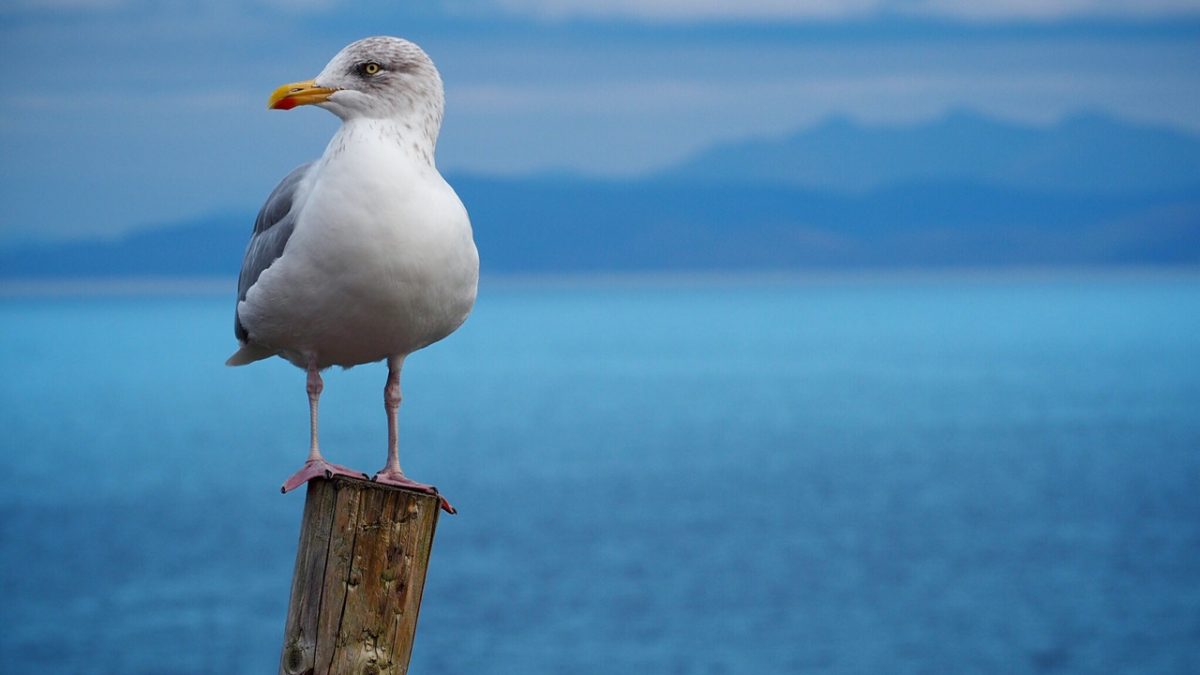
Where Do Seagulls Sleep?
Seagull Sleep Patterns
Seagulls, like most birds, sleep at night, but their sleep habits can be different from land birds. Seagulls are often active during the day and rest at night, but they may also take naps throughout the day. They can sleep in a variety of positions, including standing on one leg with their head tucked under a wing, sitting on the ground, or floating on the water.
The Need for Sleep in Seagulls
Sleep is essential for seagulls’ well-being, energy conservation, and survival. During sleep, seagulls’ bodies and minds rest and repair themselves. Sleep also helps seagulls to consolidate memories and learn new things.
Where Do Seagulls Sleep?
Where Do Seagulls Sleep?
Seagulls are known for their adaptability when it comes to finding suitable sleeping spots. These resourceful birds can be found resting in a variety of locations, both in their natural habitats and in urban environments.
1. Natural Habitats
Seagulls have a strong connection to coastal areas, and their natural habitats often dictate where they choose to rest. Here are some of the typical places where seagulls sleep in their native environments:
- Cliffs: Cliff faces near the coast provide excellent vantage points for seagulls. These birds often settle on rocky ledges, sheltered from the elements, and away from potential predators.
- Beaches: Seagulls are frequently seen napping on sandy shorelines. The open expanse of a beach provides a clear view of approaching danger, and the sand offers a relatively comfortable resting surface.
- Coastal Rocks: The crevices and rocky outcrops along the shoreline offer seagulls shelter and protection, making them suitable sleeping spots. These rocky areas also help seagulls stay close to their feeding grounds.
2. Urban Environments:
Seagulls have shown a remarkable ability to adapt to urban landscapes. In cities and towns near the coast, they have found alternative sleeping locations, often quite unusual:
- Rooftops: Seagulls often choose the flat, spacious roofs of buildings for their nighttime repose. The elevated vantage point may mimic natural cliffs, providing security against ground-based threats.
- Piers: Coastal piers and docks offer seagulls elevated platforms above the water, keeping them safe from many terrestrial predators. They can often be seen resting on the wooden planks or railings.
- Lamp Posts and Streetlights: It’s not uncommon to find seagulls perched on lamp posts and streetlights in urban areas. These elevated structures provide a clear view of the surroundings, and the warmth emitted from the lights can be comforting during cooler nights.
3. Social Aspects:
Seagulls are not solitary sleepers. Social behavior plays a significant role in where and how they sleep:
- Group Sleeping: Seagulls often sleep in groups for various reasons. Safety in numbers is one primary motivation. With more eyes to watch for predators, a group of seagulls can rest more peacefully. Additionally, sharing body heat in a huddle helps them stay warm during chilly nights, especially in colder regions.
In summary, seagulls exhibit remarkable versatility in their choice of sleeping locations. Their adaptability to both natural and urban environments showcases their ability to thrive in a range of settings, all while maintaining their safety and comfort. Whether resting on coastal cliffs, urban rooftops, or in a tightly knit group, seagulls have found ingenious ways to catch their well-deserved sleep while navigating the challenges of their surroundings.
Factors Affecting Seagull Sleeping Locations
The following factors can affect where seagulls choose to sleep:
- Weather conditions: Seagulls may seek shelter from bad weather, such as wind and rain, when choosing a sleeping location.
- Predators: Seagulls will avoid sleeping in areas where they are vulnerable to predators.
- Seasonal variations: Seagulls’ sleeping habits can change during different seasons. For example, seagulls may migrate to warmer climates during the winter and sleep in different locations than they do during the summer.
Nesting and Rookeries
Seagulls are colonial nesters, meaning that they nest in large groups called rookeries. Rookeries are typically located in cliffs, on islands, or on other remote sites. Seagulls may also nest on human-made structures, such as rooftops and lighthouses.
Unusual Sleeping Behaviors
Seagulls, despite their common presence in coastal areas and urban environments, have some fascinating and rather unusual sleeping behaviors that set them apart from other birds. Here are a few of these quirks:
1. Sleeping on the Wing:
- Perhaps one of the most remarkable behaviors of seagulls is their ability to sleep while flying. They are known to glide through the air with one eye open to detect any potential threats. This unique adaptation allows them to rest while still being alert to danger. It’s a testament to their exceptional survival skills.
2. Unihemispheric Slow-Wave Sleep:
- Seagulls, like many other birds, have the ability to engage in unihemispheric slow-wave sleep. This means that they can shut down one hemisphere of their brain while keeping the other hemisphere awake and alert. This allows them to maintain basic functions while resting. It’s a vital adaptation for a bird that spends a significant part of its life on the water.
3. Sleeping Standing Up:
- While many birds perch or nest while sleeping, seagulls are known to sleep standing up on one leg. This behavior conserves energy and allows them to stay somewhat mobile, making it easier to take off quickly if a threat approaches.
4. Alternative Roosting Sites:
- In urban environments, seagulls often choose unconventional sleeping locations. This might include perching on top of boats in marinas, on chimneys, and even on large sculptures. Their adaptability to urban structures showcases their ability to find shelter in unexpected places.
5. Noise Tolerance:
- Seagulls seem to have a remarkable tolerance for noise. They can sleep in locations near busy, noisy areas like harbors or boardwalks without being significantly disturbed. This ability to sleep amidst commotion is quite unusual among bird species.
6. Mid-Day Napping:
- Seagulls are diurnal birds, which means they are active during the day. However, they may take short naps or rest periods during the mid-day when the sun is high. This is an unusual daytime resting behavior that contrasts with most birds, which are more active during daylight hours.
7. Adaptation to Man-Made Structures:
- Seagulls exhibit a remarkable affinity for man-made structures when it comes to sleeping. In addition to rooftops and lamp posts, they often choose bridges and highway signs as nighttime perches. Their adaptability to these structures highlights their resilience in urban environments.
In conclusion, seagulls’ sleeping behaviors are not only unique but also a testament to their remarkable ability to adapt and survive in diverse habitats. From sleeping on the wing to tolerating urban noise, these birds have developed strategies that help them find rest and safety in the midst of various challenges. Understanding these behaviors sheds light on the fascinating world of seagulls and their remarkable adaptations.
Conservation and Human Interaction
Human activity can have a negative impact on seagulls’ sleep patterns and habitats. For example, noise pollution from boats and airplanes can disrupt seagulls’ sleep. Development and coastal erosion can also destroy seagull nesting and roosting sites.
Conservation efforts are important to protect seagull populations and their habitats. This includes reducing noise pollution, protecting coastal areas, and restoring degraded habitats.
Conclusion
Seagulls are fascinating creatures with a variety of unique sleep behaviors. By understanding their sleep patterns and needs, we can help to protect them and their habitats.



